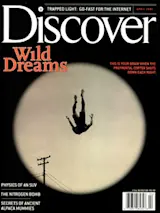by Fenella Saunders
Although the Chinese were transferring fire using sulfur-impregnated sticks as early as A.D. 570, the first step toward a modern, chemically lit match came in 1680, when British scientist Robert Boyle found he could create a flame by rubbing phosphorus-coated paper against a sulfur-tipped stick. In 1827, English chemist John Walker began selling the first struck matches, ignited by friction from scraping the potassium chloride and antimony sulfide tips between a fold of sandpaper. Four years later Charles Sauria of France substituted white phosphorus for antimony sulfide. Such "lucifers" remained popular through the turn of the century. Unfortunately, they tended to ignite spontaneously. In 1855 Johan Edvard Lundström of Sweden patented safety matches using less volatile red phosphorus. In 1889, American Joshua Pusey patented paper matches held in a cardboard book, still the state of the art.














